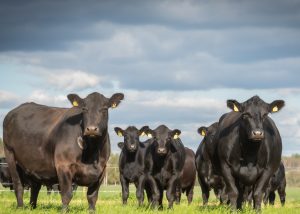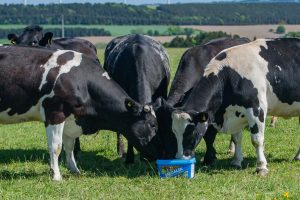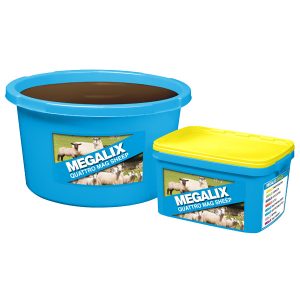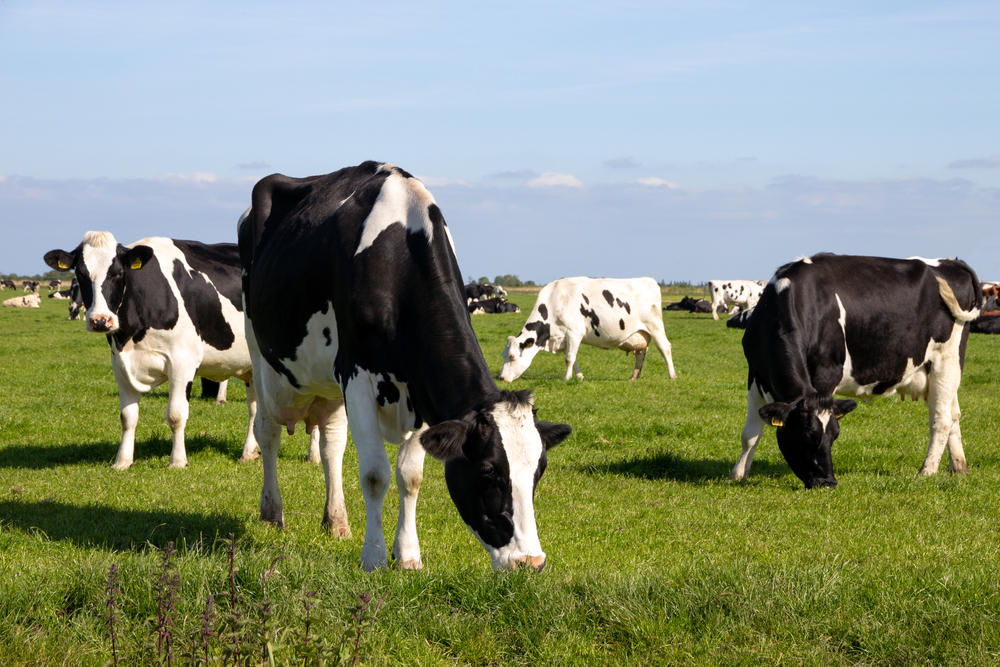Turning cattle out on grass brings many management benefits, early spring grazing can also be the source of a significant health challenge.
Lush, green, low mineral, early season grass is often lacking magnesium and when cattle are turned out to graze, they risk developing grass staggers, otherwise known as grass tetany or hypomagnesaemia. This is a serious metabolic disorder and a very real threat for suckler and dairy cows at turnout as well as ewes post-lambing.
Staggers however can be managed by assessing and managing the on-farm risks. Farmers are urged to consider options early this year, as a result of the extreme cold wet weather the UK has experienced over the last 4 months. With temperatures now beginning to climb a flush of rapid grass growth can be expected.
What is Grass Staggers (Grass tetany/Hypomagnesaemia)
Estimations suggest that 1% of cattle in the UK will experience clinical grass staggers (ADHB), however a far larger percentage of animals, including ewes, will experience sub-clinical cases that may affect overall animal performance.
Magnesium (Mg) is a key macro-nutrient in the diet. It is especially important to ensure correct nerve and muscle function, as well as bone formation. Magnesium (Mg) is also a keyaid to fibre digestion in the rumen. Grass staggers is defined as a deficiency of available dietary magnesium which in turn presents a significant risk for the development of clinical or subclinical hypocalcaemia (milk fever).

Main causes of grass staggers
Cows are almost entirely dependent on a continual daily dietary intake of Mg as there is only a small available pool of the mineral internally to cover shortfalls. A lack of dietary supply and/or intake of Mg (low dry matter intake) will, therefore, lead to the development of grass staggers.
Rapidly growing spring grass typically has a low magnesium content (0.1 to 0.2% in dry matter) which, combined with its low dry matter and rapid transit through the rumen, can result in very low levels of magnesium absorption into the animal’s bloodstream. Magnesium is predominantly stored in the bones of the animal and consequently is not readily available when dietary supply is compromised. Livestock rely on daily magnesium supplementation to maintain adequate blood magnesium levels at times where risk is increased such as spring and autumn.
How to prevent grass staggers
To reduce the risk of grass staggers, it’s essential to provide long fibre, such as hay or silage, to help slow the rapid passage of wet spring grass through the rumen. This allows for better digestion and absorption of nutrients. Additionally, maintaining proper energy levels in the diet, particularly from starches and sugars, is important to prevent excess rumen ammonia. Adequate dry matter intake is crucial, as is ensuring a balanced supply of minerals, trace elements, and vitamins. Providing a supplementary source of sodium (salt) is vital to restore the sodium-to-potassium balance, which can help mitigate the risk of grass staggers.
Finally, and most importantly, it is vital to ensure stock have daily access to a suitable magnesium supplement.
Magnesium is typically an unpalatable mineral, so by presenting it in a molassed free-access mineral lick, farmers can be assured that their stock have a reliable magnesium supplement to complement their diet. Ideally, magnesium supplements should be offered up to two weeks pre-turnout to better prepare stock for changes.

Prepare for staggers season and offer livestock the very best in magnesium supplementation this Spring
There are 3 key criteria for an effective magnesium supplement:
- The magnesium level in the formulation
- The palatability and therefore the intake realistically achievable*
- The availability of the magnesium to the cow
* This is particularly important when the supplementary magnesium is free access and consumed by choice.

MEGALIX Quattro Mag Cattle contains four sources of highly bio-available magnesium. Two quickly available sources are combined with two slow releasing sources giving livestock the ultimate protection against staggers. The inclusion of AGMA FG85 Calcined Magnesite, the leading magnesium source on the market, makes MEGALIX Quattro Mag Cattle the most bio-available magnesium supplement available.
Why is AGMA FG85 Calcined Magnesite important?
Whilst many supplement manufacturers work to least cost formulation, Scotmin considers it more important to use the highest quality and most bio-available raw materials at levels required by the animal. AGMA FG85 Calcined Magnesite is the leading magnesium source on the market and has been used in the manufacture of our supplements for over 25 years. Not only does it have high magnesium content, but studies carried out by Glasgow University show AGMA to be the market’s most bio-available and consistent product. (Parker & Hemingway 1989, Parker, Ritchie & Hemingway 1989).
A more recent study conducted in Holland showed that 50% more magnesium was absorbed by animals fed AGMA compared to those fed Chinese Cal Mag. The very consistent particle size, large surface area, and consistent temperature during production of AGMA are important factors influencing its efficacy.

MEGALIX Quattro Mag Sheep is also available, featuring all the benefits of MEGALIX Quattro Mag Cattle, however does not include copper.
Questions?
Scotmin are here to ensure that our farmers achieve maximum performance. Our team of livestock experts are available to provide you with create an effective solution for your livestock supplementation needs.

